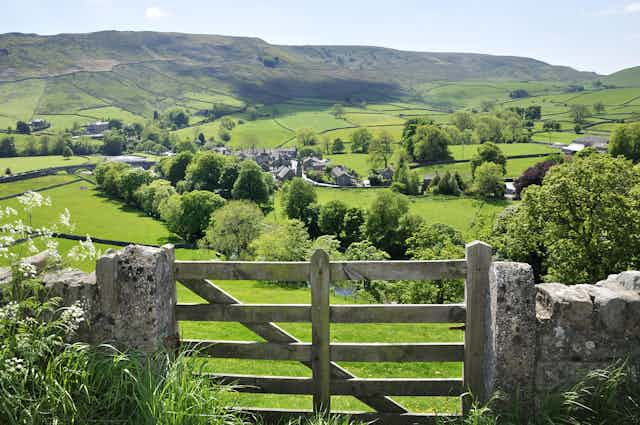A century of managing the English countryside badly has led to collapsing ecosystems, growing threats from flooding, more farms going bust than ever before and a global climate crisis still lacking any coherent and practical approach to sorting it out.
As the UK hosts the COP 26 conference in Glasgow, where the world’s leaders discuss plans for addressing climate change, it would be an excellent time to signal a new approach to countryside management.
A recently published Parliament Office for Science and Technology report on sustainable land management proposes a new approach to countryside management in England, based on 18 months of research, over 500 scientific studies and interviews with researchers, public policy executives and key practictioners in the field.
Solving this crisis will take massive and radical shifts. This will involve hundreds of decisions by different groups: farmers, national and local governments, banks, land agents, industry and the public; and they all need to work together.
How did it get so bad?
The UK, and particularly England, is one of the most crowded countries in Europe, which places significant pressures upon land and land use. Unlike the rest of Europe, the last time England experienced a major redistribution of land ownership was the dissolution of the monasteries in the 16th century.

The second world war marked a huge change how land was managed. Today’s farming in England is still largely shaped by 1947 Agriculture Act, which pushed self‐sufficiency in food production. Industrialised agriculture led to a reliance on diesel vehicles, inorganic fertilisers and chemical pesticides. This led to the end of horse-drawn ploughing and leaving fields fallow to recover. Efficiency went up, but the environmental costs were hidden until recently.
Today’s problems

The Nature Conservancy Council estimated that by 1984, only 3% of Britain’s natural grasslands were left undamaged by agricultural intensification. Over the same time, the amount of land farmed in the England has grown to around 75%. As a result, both habitat diversity on farms and biodiversity across the country have been dramatically reduced.
Over the 20th century, the nation’s priority was to feed everyone, but not to protect the natural environment. Arguably, this was successful – farm productivity rose sharply (though food imports also grew after the UK joined the EU in 1973).
Trying to feed the nation and solving a biodiversity crisis would always be a challenge. Unfortunately, governments of the world are now also dealing with a global threat of human-caused climate change, flooding caused by bad river management, and widespread destruction of culture and heritage. Farmland biodiversity decline shows that when attention is focused on just one issue (food security), it is easy to cause more harm elsewhere.

The problem has been that governments and land managers have always tried to fix problems individually. Only by considering each area’s connection to others can sustainable change be achieved.
Read more: How gardeners are reclaiming agriculture from industry, one seed at a time
Working together
Fortunately, there are many excellent examples of this kind of practice happening in England today.

In the Lake District, around the Haweswater reservoir, there are two Herdwick sheep farms managed by farmers, wildlife charity the RSPB and the water company United Utilities. Here, the three parties maintain the land and their interests by working together. They manage the land to ensure higher water quality downstream by limiting sheep on the fells where rivers surface. This land is now a haven for endangered species, including England’s rarest fish, and birds like the Firecrest.

The reasons for floods (like those in July 2021 in London) happen along the whole length of the river. Community businesses like Ullswater CIC take what is known as a “catchment approach” to flood management, planting trees and managing channels across the river’s length. Lancaster University research shows taking this bigger picture approach, combined with natural flood management strategies, is more effective in preventing flooding than any man-made barrier.

We need to reverse global biodiversity loss, improve ecosystem resilience and stabilise the environment. Although bigger areas are often better for wildlife, research shows wildlife corridors can be very effective. These are ways of connecting areas of habitat for wildlife, massively increasing space for endangered animals, insects and plants, like a network of sites all working together. Natural England plans to create local and national networks) of these spaces.
Sites such as the Knepp Estate in West Sussex bridge environmental and agricultural thinking. Farming intensity has been hugely reduced to allow for regeneration of the natural environment, without compromising the bottom line.
Government must integrate nature restoration with other landscape benefits (food, water, climate, biodiversity), while considering historical and cultural factors that have shaped the land. Examples of planting broadleaf forests on ancient peatlands, relocating ancient woodland are the result of not listening to local knowledge and experience. Changing this approach will help England keep producing clean water and enough food to feed everyone, limit flood damage, restore ecosystems and become more resilient to global climate change. If not, the risk of another 100 years of bad land management will continue to impede any progress in solving environmental catastrophes.

